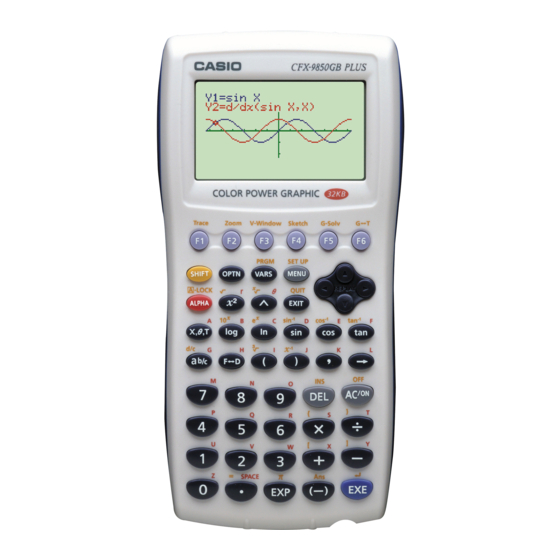Inputting a Recursion Formula and Generating a Table
4. Display the table of the recursion formula. At this time, a menu of table
functions appears at the bottom of the screen.
J6(TABL)
Currently selected cell (up to six digits)
• There can be only one recursion table stored in memory at one time.
• Except for linear expression
a
term {
} to generate a table: exponential expressions (such as
n
fractional expressions (such as
a
n
n
=
–
– 1
n
• Note the following points when specifying a table range.
• If a negative value is specified as a start or end value, the calculator
drops the negative sign. If a decimal value or fraction is specified, the unit
uses only the integer part of the value.
• When Start = 0 and
changes to Start = 1 and generates the table.
• When Start > End, the calculator swaps the Start and End values and
generates the table.
• When Start = End, the calculator generates a table for Start values only.
• If the start value is very large, it may take a long time to generate a table
for linear recursion between two terms and linear recursion between
three terms.
• Changing the angle unit setting while a table generated from a trigonometric
expression is on the display does not cause the displayed values to change.
To cause the values in the table to be updated using the new setting, display
the table, press 1 (FORM), change the angle unit setting, and then press
6 (TABL).
n
, any of the following can be input for general
a
n
= (
+ 1)/
n
), trigonometric expressions (such as
a
b
/
is selected as the initial term, the calculator
1
1
Value in currently highlighted cell
a
n
), irrational expressions (such as
a
= sin 2nπ).
n
16 - 2
n
= 2
– 1),
n
221

